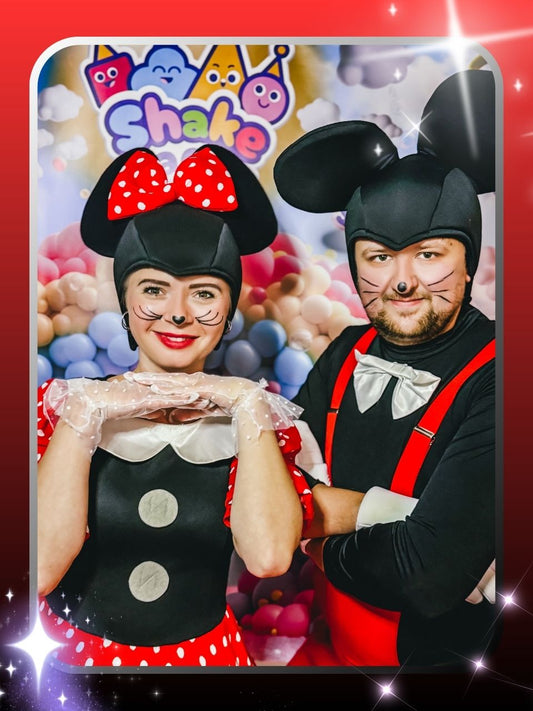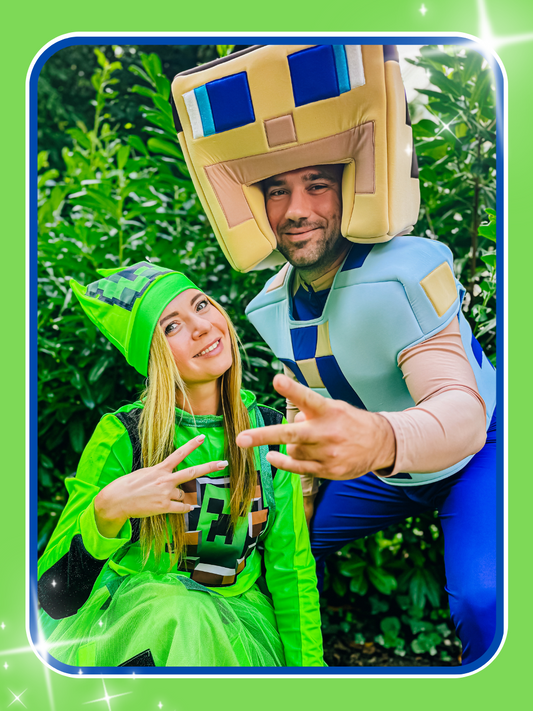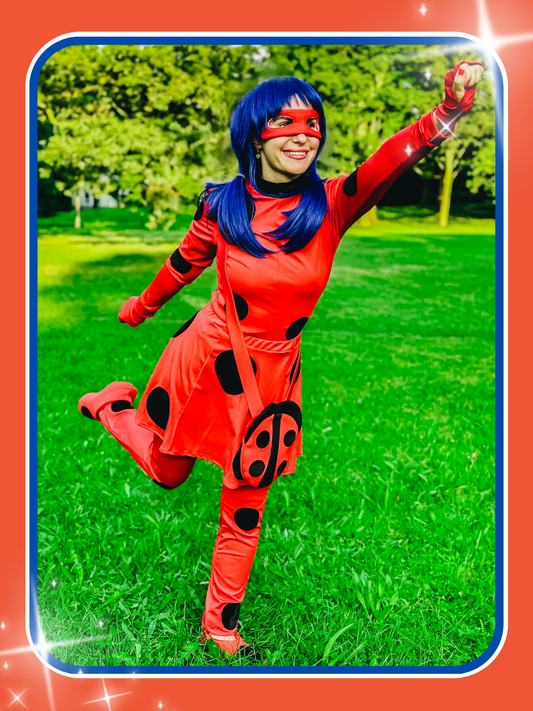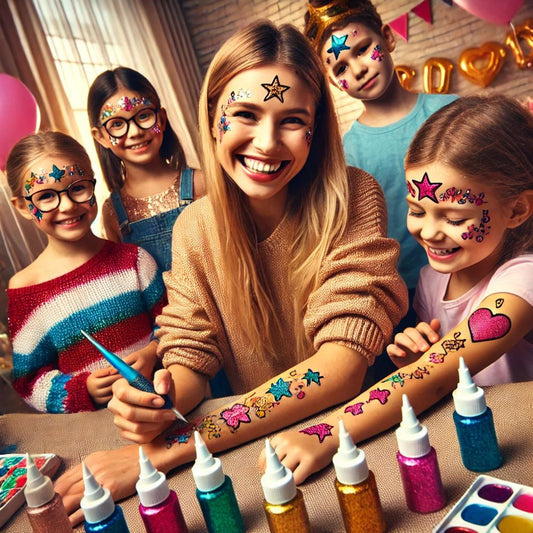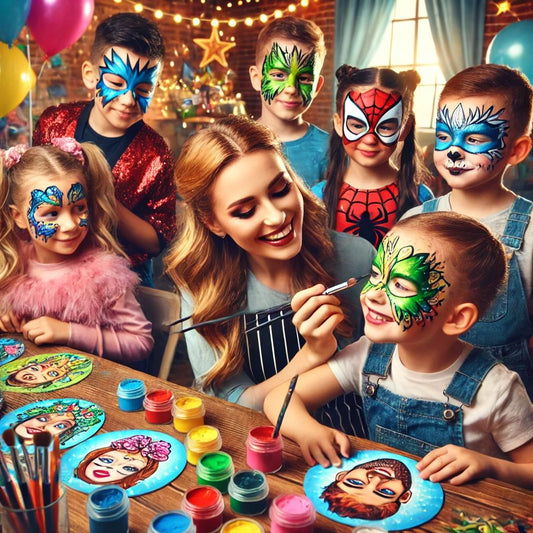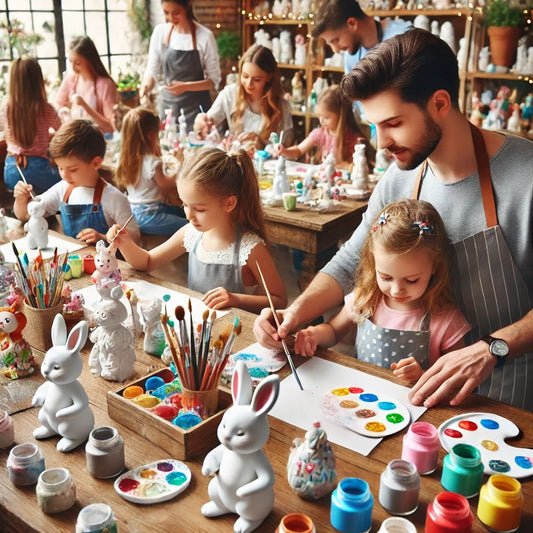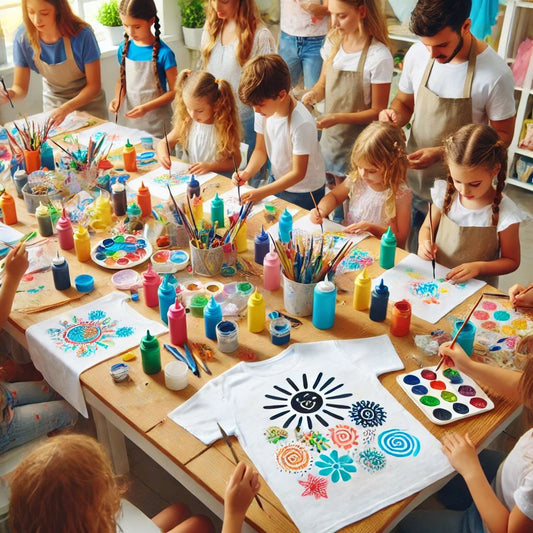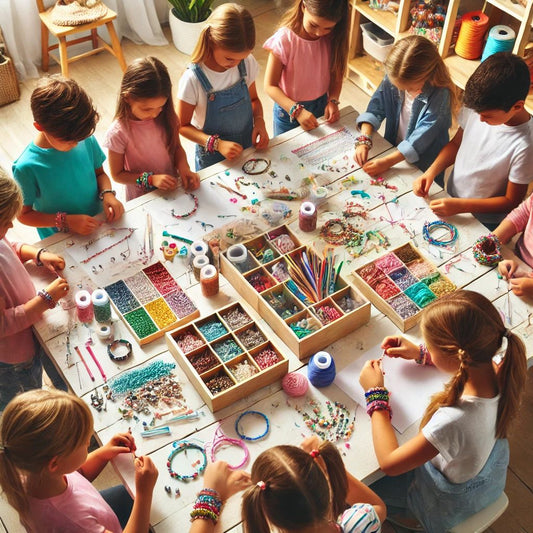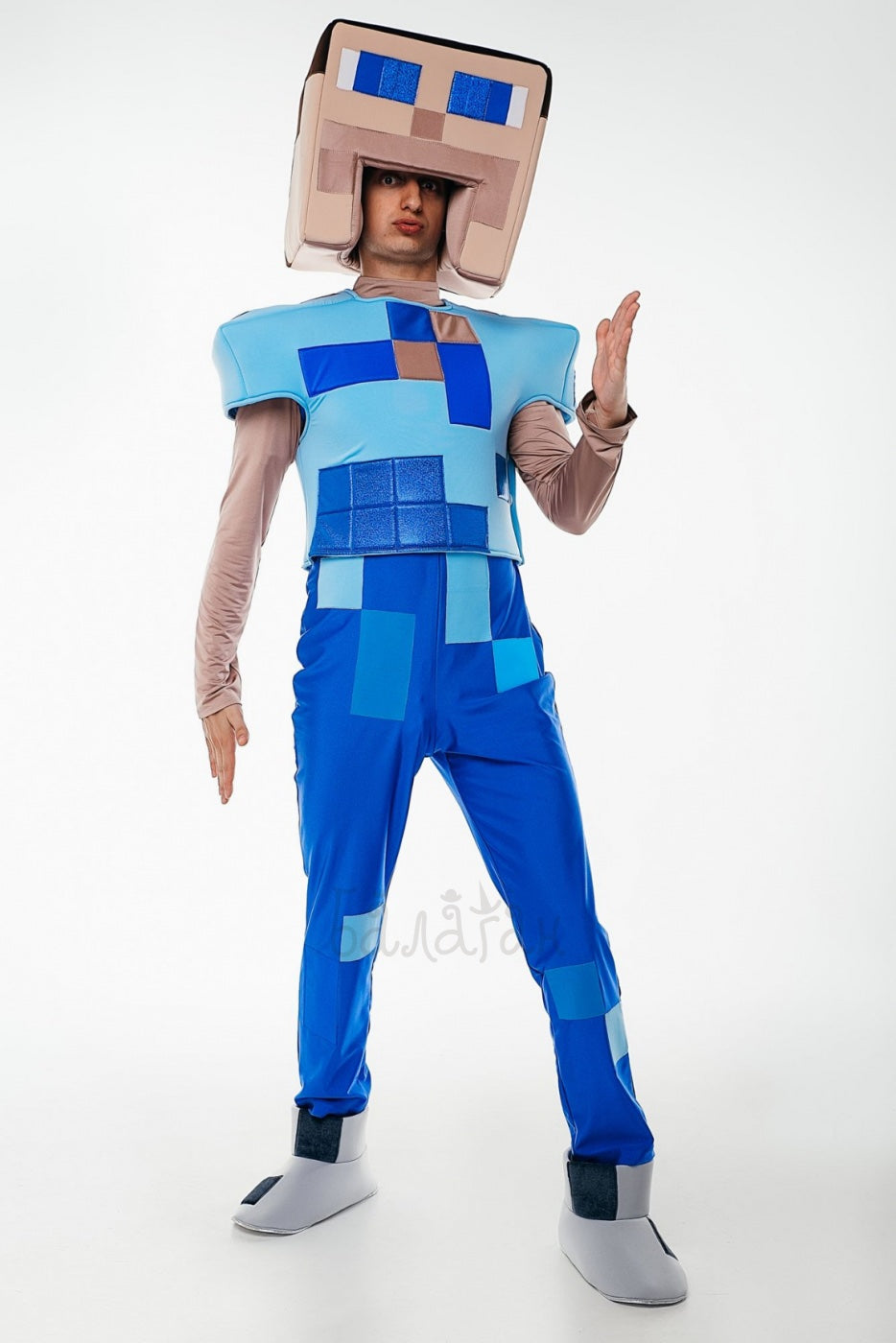
Why Minecraft Remains One of the Most Popular Games Among Kids
Share
Minecraft
It is an iconic video game released in 2011 that quickly gained worldwide popularity and became one of the most successful games of all time. It is a virtual sandbox where players can create, explore and interact with a world made of blocks. Minecraft's global influence extends far beyond the gaming industry: the game is used in education, inspires artists and is the basis for many communities around the world.
Minecraft is especially popular among children. Its ease of learning, endless possibilities for creativity and exciting adventures make it attractive to a young audience. The game offers children a unique combination of entertainment and education, which contributes to its enduring popularity.
The purpose of this blog is to explore the key reasons why Minecraft remains one of the most loved games among children. We will look at the aspects of the game that make it not only fun but also beneficial for children's development.
Creative freedom and non-linear gameplay
One of the key features of Minecraft is its sandbox nature. Unlike most games that offer predetermined goals and scenarios, Minecraft allows players to choose what they want to do in the virtual world. There are no strict rules or linear plot - players can create their own goals and explore the world as they wish.
The game offers endless possibilities for creation and exploration. Players can build anything they can imagine using various blocks and materials. This can be as simple as a house or as complex as castles, skyscrapers, underground cities, or even entire worlds designed and built entirely by players. This allows Minecraft to provide space for the most daring ideas and experiments.
This gameplay actively develops creativity and imagination in children. Children learn to plan and implement their ideas into reality, solve problems and find creative solutions. In addition, the process of creating in Minecraft requires spatial thinking and design skills from players, which can be useful in real life.
Examples of popular player-made builds are impressive in their scale and detail. They include huge castles with detailed interiors, realistic replicas of famous cities including New York and London, and fantasy worlds based on books and movies. These examples not only inspire other players, but also demonstrate how diverse creative projects can be in Minecraft.
Educational benefits
Minecraft is not just a game, but also a powerful educational tool that is actively used in educational institutions around the world. Its educational aspects cover a wide range of skills that children can develop through play.
One of the key aspects is problem solving. In Minecraft, players face various challenges that require strategic thinking and creativity. For example, to survive in the game world, players need to mine resources, craft tools, and build shelters. This process teaches planning, resource management, and decision making, which is important not only in the game but also in real life.
Minecraft is also used in schools and educational programs as a tool for teaching various subjects. For example, math teachers can use the game to explain geometry, and history lessons can involve creating historically accurate models of buildings and cities. Some schools even use Minecraft to teach programming languages, as the game provides basic tools for creating logic chains and programming through redstone mechanics.
The game also teaches architecture and design basics. Building in Minecraft requires an understanding of scale, proportion, and structure, which helps children develop spatial thinking and planning skills. Creating complex structures requires attention to detail and patience, which ultimately helps children better understand the principles of architecture.
Minecraft also actively develops teamwork skills. In multiplayer mode, players can team up to complete common tasks, which teaches them cooperation, division of responsibilities, and effective interaction with others.
The mechanics of redstone, a special resource in the game, allow children to learn the basics of programming. Using redstone, players can create complex circuits, automate processes, and even create primitive computing devices. This helps children understand logical operations and the principles of electrical circuits, which is a great introduction to the world of programming and engineering.
Feedback from educators and parents confirms the educational value of Minecraft. Teachers note that the game helps students better absorb educational material, especially in cases where standard teaching methods do not produce the desired result. Parents emphasize that Minecraft develops important skills in children, such as creative thinking, logic and teamwork, while remaining an exciting and exciting game.
Social interaction and multiplayer experience
One of the unique features of Minecraft is its multiplayer mode, which allows players to interact with each other in the same virtual world. This makes the game not only an individual but also a collective experience, where players can collaborate, compete, and share their achievements.
Minecraft's multiplayer features offer a wide range of opportunities for interaction. Players can join servers created by other users or create their own worlds to which they invite friends and acquaintances. In such worlds, they can work together on large projects, explore new areas, and even organize competitions.
The game encourages cooperation and social interaction among children because Minecraft tasks often require a group effort. For example, building a large city or creating a complex game structure can be difficult on your own, so children team up to achieve common goals. This teaches them how to distribute tasks, consider others' opinions, and work as a team. In the process of creating together, players develop communication skills and learn how to resolve conflicts, which is an important life experience.
Minecraft servers and communities play a significant role in the social lives of players. Servers are specialized virtual worlds where players can join others to participate in various gaming activities. Some servers focus on creativity and co-building, while others focus on survival or mini-games. Communities of players form around these servers, sharing their knowledge, experiences, and ideas. These communities often extend beyond the game and continue to communicate on forums, social media, and specialized platforms like Discord.
Multiplayer play also plays an important role in building friendships and teamwork skills. Children who play Minecraft together often become friends and maintain social relationships outside of the game. The virtual projects they create together become the basis for discussions and shared plans, which strengthens social bonds. Working together on complex tasks in the game teaches children responsibility, patience, and leadership skills. Moreover, such collective efforts help develop in children an understanding of the importance of teamwork and mutual assistance, which is an important aspect in their personal development.
Ultimately, Minecraft's multiplayer experience not only enriches the gameplay, but also helps kids develop important social skills that will serve them well in real life.
Regular updates and new content
One of the reasons why Minecraft has remained relevant and popular over the years is the active support of its developers. Mojang, the creator of Minecraft, has committed itself from the very beginning to regularly release updates and add new content. These updates not only fix bugs and improve the stability of the game, but also introduce new gameplay elements that make the game even more exciting and varied.
Regular updates keep the game interesting by constantly introducing new features and mechanics. Players eagerly await Mojang's announcements, knowing that each new patch has the potential to bring something unique, be it new blocks, creatures, biomes, or game modes. This keeps Minecraft fresh and interesting for both old and new players. Updates also often include interface and gameplay improvements, making the game more user-friendly and enjoyable.
Examples of popular updates demonstrate how Mojang manages to maintain the attention and enthusiasm of the community. One of the most significant and talked about updates was the Nether Update , released in 2020. This update significantly reworked one of the most dangerous areas of the game - the Nether. The game received new biomes, such as Basalt Deltas and Warped Forest, as well as new creatures, including piglins and hoglins. These innovations not only diversified the game, but also created new opportunities for exploration and crafting, which attracted the attention of both veterans and newcomers to the game.
Another major update was the Caves & Cliffs Update , which was split into two parts and released in 2021. This update completely changed the generation of underground spaces and mountainous landscapes, making them more diverse and interesting to explore. The introduction of new blocks such as copper and amethyst, as well as new creatures including goats and axolotls, brought new opportunities for creativity and exploration to the game. This update also included changes to the depth of worlds, allowing players to explore even deeper and more complex dungeons.
These examples show how Minecraft updates can have a significant impact on the game and its community. Each new content release inspires players to create new projects, discuss strategies, and share experiences. Updates not only keep the game interesting, but also help the community grow by uniting players around the new opportunities and challenges the game provides.
As such, regular updates and new content from Mojang play a key role in keeping Minecraft vibrant and engaging for players of all ages and experience levels.
Accessibility and cross-platform play
One of the key reasons why Minecraft maintains its popularity is its availability across multiple platforms. The game was originally developed for PC, but over time it has become available on most modern devices, including gaming consoles (PlayStation, Xbox, Nintendo Switch) and mobile devices (iOS, Android). This allows players to enjoy Minecraft anytime, anywhere, regardless of their device preferences.
Minecraft’s availability across multiple platforms ensures that the game reaches a wide audience. Kids can start playing on a PC at home, continue on a tablet while on the go, or on a smartphone during a break at school. The ability to play on multiple devices makes Minecraft not only convenient, but also a versatile game that can be played in a variety of situations and moods. It also means that players with varying levels of technical skill can easily pick up the game on the platform that is most comfortable for them.
One of the most significant features of Minecraft is cross-platform play. This feature allows players from different devices to play together in the same virtual world. For example, a child playing on PlayStation can join a friend's game who is using a PC, or another friend playing on a mobile phone. Cross-platform play erases the boundaries between devices, allowing children to stay connected with their friends and enjoy a cooperative gaming experience, no matter what device they have.
This feature also allows families who may have different devices to play together, which strengthens family bonds and creates an opportunity to spend time together. In addition, cross-platform play increases opportunities for cooperation and competition, making the gameplay more varied and exciting.
Minecraft's accessibility plays a major role in maintaining its popularity. The game's availability on virtually all modern platforms and its cross-platform play means it remains relevant to a wide audience. This is especially important in a world where the video game market is constantly changing and new technologies and devices are emerging. Minecraft has successfully adapted to these changes, offering its players a versatile and flexible gaming experience.
Thus, accessibility and cross-platform play are integral elements of Minecraft's success, ensuring the game's enduring popularity and wide acceptance among players of all ages and backgrounds.
Safe and controlled environment
One of the key factors that makes Minecraft attractive to children and their parents is its safe and controlled environment. The game's developers, Mojang, have made sure to provide parents with tools to control and monitor their children's gaming experience, which is especially important in today's digital world.
Minecraft has a variety of parental controls that allow parents to restrict access to certain aspects of the game, manage the time spent playing, and control how their children interact with other players. For example, parents can set the game so that their child can only play in single-player mode, which eliminates the possibility of communicating with strangers. Multiplayer modes also have chat filters that automatically block inappropriate messages and language, creating a safer environment for children.
These safety measures make Minecraft an attractive game for children, as they can freely enjoy the gameplay without being exposed to inappropriate content or negative influences. Parents, in turn, can be sure that their children are playing in a safe environment, making Minecraft a preferred choice over other games. Thanks to this, Minecraft combines two important aspects: fun and exciting gameplay that children enjoy, and a safe, controlled environment that meets the requirements of parents.
The role of modding and custom servers is also important in creating unique experiences tailored to different age groups. Modding (the creation and use of game modifications) allows players to add new content and change existing elements of the game, creating personalized versions of Minecraft. Parents can choose mods that are appropriate for their children's age and interests, such as mods with educational elements or themed worlds based on favorite books and movies.
Custom servers, which are often created by communities of players, also play a significant role in tailoring the gaming experience. These servers may have specific rules and restrictions, making them suitable for different age groups. For example, there are servers specifically designed for younger children, with a friendly community and strict rules of conduct. These servers may include elements that help children develop social skills, cooperation, and creativity in a safe and supportive environment.
So, Minecraft not only offers a fun and creative gaming experience, but also provides a safe and controlled environment where children can play and develop without being exposed to risks. The possibilities of modding and using custom servers allow for further customization of the gaming experience, ensuring that it meets the interests and needs of different age groups. These aspects make Minecraft one of the most popular and respected games among families around the world.
Cultural Impact and Community Engagement
Minecraft has had a huge impact on pop culture, becoming more than just a game, but a phenomenon that permeates many aspects of modern life. Since its release, Minecraft has inspired countless content creators, artists, and developers, and that influence continues to this day.
One of the most striking examples of Minecraft’s influence on pop culture is its popularity on platforms like YouTube. Millions of videos dedicated to the game attract billions of views worldwide. Content creators create a variety of videos, including tutorials, walkthroughs, mod reviews, and even full-fledged series filmed in the Minecraft world. Some of these channels have huge audiences, and their creators become real stars among gamers. Minecraft has also inspired the creation of animated series, music, and even fan films. This helps to maintain interest in the game and attract new players.
Merchandising is another area where Minecraft has made a significant impact. Official Minecraft toys, clothing, accessories, and even LEGO Minecraft sets have become popular with kids and adults alike. These products not only keep the game alive, but also allow fans to express their passion for the Minecraft world in their everyday lives. All of this helps ensure that Minecraft remains relevant and recognizable even to those who don’t play it regularly.
The game has also inspired a huge and active online community. The Minecraft community includes millions of players who communicate, share their creations, and collaborate on projects. This community is active not only in the game itself, but also on various platforms such as forums, Discord servers, Reddit, and social media. It is because of this community that Minecraft remains a vibrant and dynamic game where new content is constantly being created, ideas are discussed, and events are held.
Content creators play an important role in keeping Minecraft fresh and exciting for kids. These creators continually generate new content that draws attention to the game and inspires other players to experiment with it. Content creators also play an important role in spreading the word about new updates, mods, and events, which helps keep the game interesting.
Additionally, many content creators actively involve their viewers in the video-making process, by inviting them to participate in the filming or by sharing their ideas and creations. This creates a sense of ownership and increases children’s engagement in the Minecraft community, making them not just viewers but active participants.
Thus, Minecraft’s cultural impact and community engagement are key factors in maintaining the game’s popularity over the years. Minecraft continues to inspire both individuals and communities, creating a unique environment for creativity, communication, and learning that remains relevant and exciting for children and adults around the world.
Conclusion
Minecraft remains one of the most popular games among children due to many factors. Creative freedom and non-linear gameplay allow children to express their imagination and explore virtual worlds without restrictions. The educational benefits of the game help develop problem-solving skills, resource management, and the basics of programming and architecture. Social interaction and a multiplayer experience help build friendships and develop teamwork skills. Regular updates and new content keep the game interesting, and availability on multiple platforms and the ability to play cross-platform make Minecraft convenient for everyone. A safe and controlled environment, along with an active and engaged community, provides a positive experience for players of all ages.
Minecraft's impact on young players cannot be overstated. Not only is the game entertaining, but it also helps develop important life skills such as creative thinking, collaboration, and technical knowledge. Minecraft teaches children how to work together, solve problems, and achieve goals, making it a useful tool in their development.
Parents should be aware of the potential of Minecraft as a positive influence on their children. The game offers a safe and engaging environment where children can not only have fun but also learn new skills. Explore the world of Minecraft with your children to see how it can be an integral part of their learning and personal growth.
Call to action
We invite you to share your Minecraft experiences in the comments! Tell us how the game has affected your children, what creative projects they have completed, and what skills they have developed while playing. Your experience may be useful to other parents who are just getting to know Minecraft.
We also recommend that you explore Minecraft with your children to see for yourself the benefits. Dive into the exciting world of blocks and creativity, where your children can develop their talents and skills. And if your child is a fan of Minecraft, be sure to check out our page with the animators "Creeper and Steve Minecraft" to give them an unforgettable holiday! Find out more at the link: Animators Creeper and Steve Minecraft .

